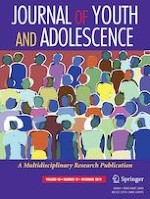11-10-2019 | Empirical Research
Sexual and Gender Minority Youth Alcohol Use: Within-Group Differences in Associations with Internalized Stigma and Victimization
Gepubliceerd in: Journal of Youth and Adolescence | Uitgave 12/2019
Log in om toegang te krijgenAbstract
Sexual and gender minority (SGM) youth are more likely to use alcohol than their heterosexual cisgender peers. At the same time, SGM youth experience sexuality- and gender identity-specific stressors known to exacerbate negative health outcomes. Though scholars have established a link between minority stressors (e.g., internalized stigma and victimization) and increased alcohol use for SGM youth as a whole, there is little indication of whether internalized stigma and victimization are more strongly associated with alcohol use for specific groups of SGM youth. A United States sample of 11,811 racially and geographically diverse 13–17 year old SGM youth was used to employ a series of gender-stratified multivariable regression models to examine the association among internalized stigma, victimization, and alcohol-related behaviors, and whether they differed for specific groups of sexual minority youth. Sexual orientation moderated several associations between sexual minority stressors (i.e., victimization and stigma) and youth’s alcohol use (i.e., recent use and heavy episodic drinking) across models stratified by gender (i.e., male, female, and non-binary). For example, bisexual boys had stronger associations between SGM-specific victimization and alcohol use frequency and heavy episodic drinking relative to gay boys; conversely, victimization and alcohol use frequency were more weakly associated among bisexual girls relative to lesbian/gay girls. Pansexual girls showed weaker associations between internalized stigma and alcohol use frequency compared to lesbian/gay girls. This paper demonstrates who among SGM youth are more likely to engage in alcohol-related behaviors as a function of differential forms of SGM-related victimization and stigma. These findings can inform substance use interventions that are tailored to youth of diverse sexual orientations and gender identities.
